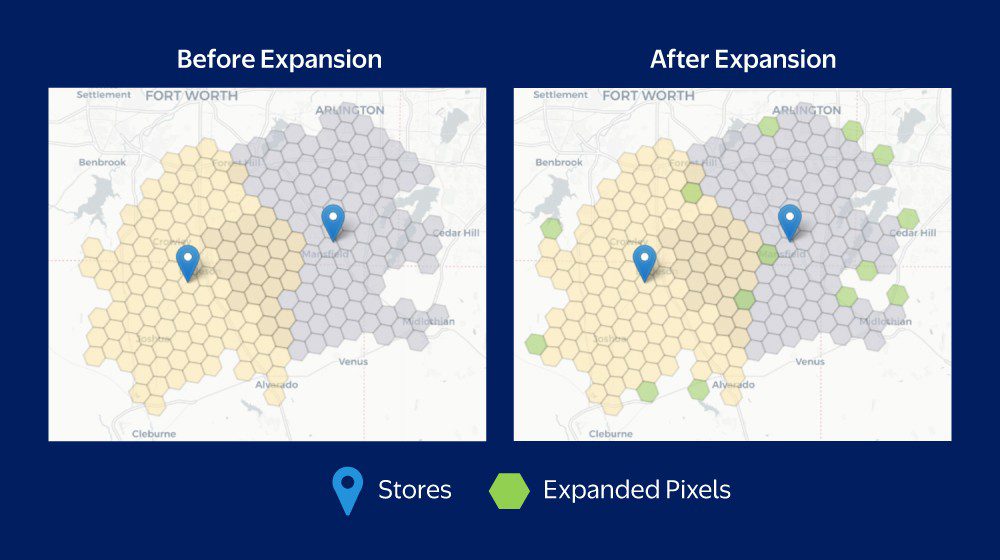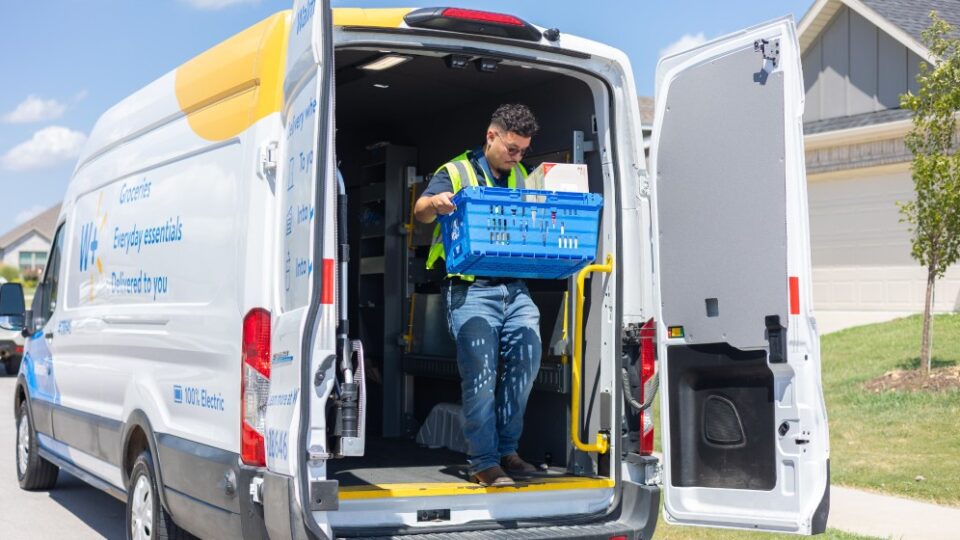Walmart has deployed geospatial technology to create a data science model that divides geographic areas into precise hexagonal grids, with the goal of optimizing delivery zones for greater efficiency. Redefining how it maps delivery areas has allowed Walmart to expand its reach to 12 million additional households across the U.S., increasing consumer access to same-day deliveries.
The geospatial technology platform, built on open source software and customized for Walmart, uses advanced geospatial intelligence along with a number of internal and external data sources. Instead of relying on traditional boundaries such as zip codes, the platform divides large areas into smaller hexagons, each containing real-time data such as slot availability, drive time, store capacity, customer demand and more.

Because hexagons fit together perfectly, they can cover an entire area without leaving gaps. Square or circular grids can create inefficiencies and leave out smaller areas at their edges, so the hexagonal shape helps ensure that every point within a delivery zone is included.
Additionally, the shift from rigid mapping methods to a more data-driven model means that, for example, a household that was previously located just outside a delivery boundary can now get the same service as their neighbor across the street.
Advertisement
Reducing Multiple Deliveries from Multiple Stores
The new mapping technology also means that customers can have orders fulfilled from multiple Walmart stores located in their service area. Previously, when a single Walmart store served as the shipping point, if a product wasn’t available at that store, the customer could receive multiple deliveries at different times for a single order.
Now, if a particular item is out of stock in one store but in-stock at a nearby location, Walmart drivers can pick up products from both stores, creating one delivery per order.
Like many other retailers, Walmart has been enhancing its delivery capabilities in a number of ways:
- In January 2024 the retailer expanded its aerial drone delivery footprint in the Dallas/Ft. Worth metroplex;
- In October 2024 Walmart began integrating prescription medications into its deliveries in six states, with plans to expand the program to 49 states; and
- In January 2025 Walmart made a deal with robotics provider Symbotic, funding a development program to enhance the retailer’s pickup and delivery fulfillment systems.
Walmart also noted that the data collected for the new mapping technology is anonymized and is used in accordance with the retailer’s privacy policies.















